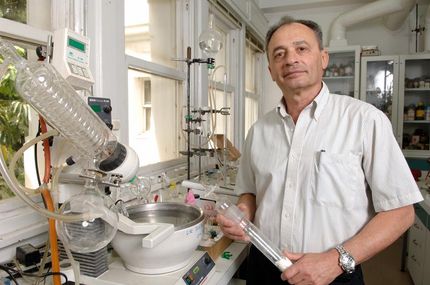BASF develops new production process for propylene oxide
- Construction of new PO plant planned - Cooperation with Solvay for production of hydrogen peroxide
BASF Aktiengesellschaft, Ludwigshafen, Germany, has developed a new process for producing propylene oxide based on hydrogen peroxide. In a pilot plant with integrated operation of all relevant process units, BASF researchers have collected and analyzed all the data required to design and operate a world-scale plant. Within the next two years a decision on the location and construction of the plant will be made. It would have an annual capacity of about 250,000 metric tons. The most favorable site is currently being assessed and is dependent on the economic environment in the upcoming years.
"In contrast to traditional PO production, the new PO process produces no by-products except water," said Jean-Pierre Dhanis, President of BASF's Polyurethane division. "We expect that the new process is highly competitive and, in addition, we are more flexible with regard to raw material supply and required infrastructure." To supply the PO plant with hydrogen peroxide, BASF is cooperating with Solvay S.A., Brussels, Belgium. An basic agreement between both companies was signed recently in Brussels.
Propylene oxide is the most important raw material for the manufacture of polyols. Polyols are building blocks for polyurethanes. These versatile polymers are used in the automotive industry, in refrigerators, sports equipment, upholstery, flooring and the soles of shoes. With sales in the Polyurethanes division of €2.7 billion in 2001, BASF is one of the world's leading supplier of polyurethane basic materials and polyurethane systems.
Most read news
Topics
Organizations
Other news from the department research and development
These products might interest you

Spinsolve Benchtop NMR by Magritek
Spinsolve Benchtop NMR
Spinsolve is a revolutionary multinuclear NMR spectrometer that provides the best performance

Eclipse by Wyatt Technology
FFF-MALS system for separation and characterization of macromolecules and nanoparticles
The latest and most innovative FFF system designed for highest usability, robustness and data quality

HYPERION II by Bruker
FT-IR and IR laser imaging (QCL) microscope for research and development
Analyze macroscopic samples with microscopic resolution (5 µm) in seconds

Get the chemical industry in your inbox
From now on, don't miss a thing: Our newsletter for the chemical industry, analytics, lab technology and process engineering brings you up to date every Tuesday and Thursday. The latest industry news, product highlights and innovations - compact and easy to understand in your inbox. Researched by us so you don't have to.


























































